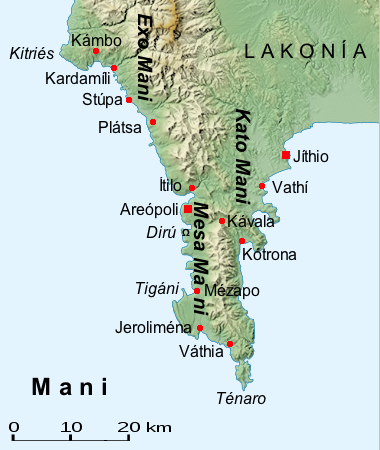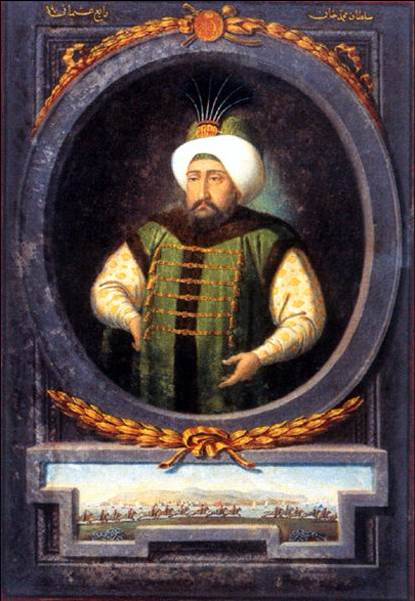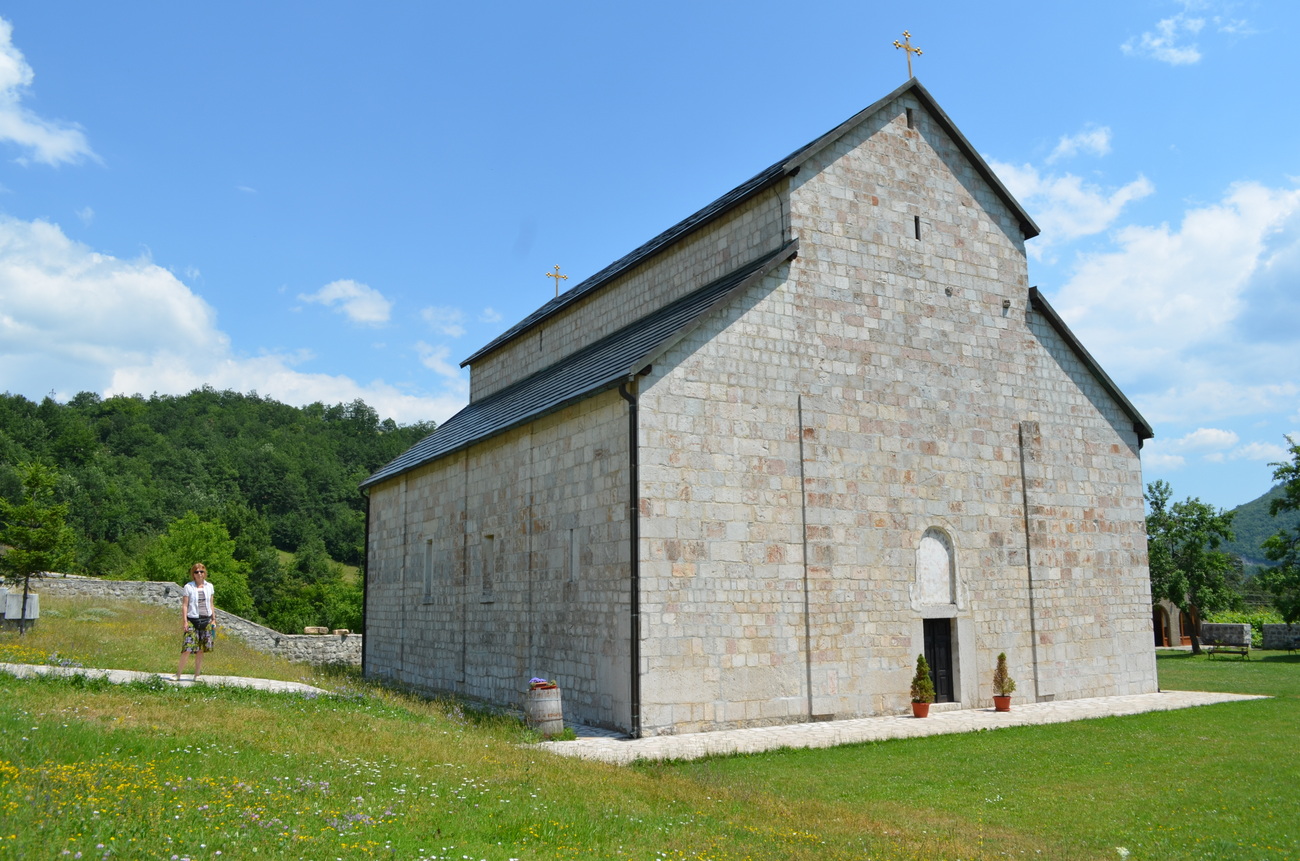|
Sixth Ottoman–Venetian War
The Morean war (), also known as the Sixth Ottoman–Venetian War, was fought between 1684–1699 as part of the wider conflict known as the "Great Turkish War", between the Republic of Venice and the Ottoman Empire. Military operations ranged from Dalmatia to the Aegean Sea, but the war's major campaign was the Venetian conquest of the Morea (Peloponnese) peninsula in southern Greece. On the Venetian side, the war was fought to avenge the loss of Crete in the Cretan War (1645–1669). It happened while the Ottomans were entangled in their northern struggle against the Habsburgsbeginning with the failed Ottoman attempt to conquer Vienna and ending with the Habsburgs gaining Buda and the whole of Hungary, leaving the Ottoman Empire unable to concentrate its forces against the Venetians. As such, the Morean War was the only Ottoman–Venetian conflict from which Venice emerged victorious, gaining significant territory. Venice's expansionist revival would be short-lived, as its g ... [...More Info...] [...Related Items...] OR: [Wikipedia] [Google] [Baidu] |
Great Turkish War
The Great Turkish War () or The Last Crusade, also called in Ottoman sources The Disaster Years (), was a series of conflicts between the Ottoman Empire and the Holy League (1684), Holy League consisting of the Holy Roman Empire, Polish–Lithuanian Commonwealth, Poland-Lithuania, Republic of Venice, Venice, Tsardom of Russia, Russia, and Kingdom of Hungary (1526–1867), the Kingdom of Hungary. Intensive fighting began in 1683 and ended with the signing of the Treaty of Karlowitz in 1699. The war was a resounding defeat for the Ottoman Empire, which for the first time lost substantial territory, in Ottoman Hungary, Hungary and the Polish–Lithuanian Commonwealth, as well as in part of the western Balkans. The war was significant also for being the first instance of Russia joining an alliance with Western Europe. Historians have labeled the war as the Fourteenth Crusade launched against the Turks by the papacy. The French did not join the Holy League, as France had agreed to r ... [...More Info...] [...Related Items...] OR: [Wikipedia] [Google] [Baidu] |
Mani Peninsula
The Mani Peninsula (), also long known by its medieval name Maina or Maïna (), is a geographical and cultural region in the Peloponnese of Southern Greece and home to the Maniots (), who claim descent from the ancient Spartans. The capital city of Mani is Areopoli. Mani is the central of three peninsulas which extend southwards from the Peloponnese. To the east is the Laconian Gulf, to the west the Messenian Gulf. The Mani peninsula forms a continuation of the Taygetos mountain range, the western spine of the Peloponnese. Etymology There are many theories regarding the etymology of the word Mani. The most accepted one is that it represents the natural evolution of the medieval name of the region, which was Maini, of uncertain origin. The name "Mani" may come from the name of the Frankish castle ''le Grand Magne''. Geography The terrain is mountainous and inaccessible. Until recent years many Mani villages could be reached only by sea. Today a narrow and winding road ... [...More Info...] [...Related Items...] OR: [Wikipedia] [Google] [Baidu] |
Ahmed II
Ahmed II (; ; was the sultan of the Ottoman Empire from 1691 to 1695. Early life Ahmed II was born on 25 February 1643 or 1 August 1642, the son of Sultan Ibrahim and Muazzez Sultan. On 21 October 1649, Ahmed, along with his brothers Mehmed and Suleiman was circumcised. During the reigns of his older brothers, Ahmed was imprisoned in Kafes, and he stayed there almost 43 years. Reign During his reign, Ahmed II devoted most of his attention to the wars against the Habsburgs and related foreign policy, governmental and economic issues. Of these, the most important were the tax reforms and the introduction of the lifelong tax farm system (''malikâne''). Following the recovery of Belgrade under his predecessor, Suleiman II, the military frontier reached a rough stalemate on the Danube, with the Habsburgs no longer able to advance south of it, and the Ottomans attempting, ultimately unsuccessfully, to regain the initiative north of it. Among the most important features of ... [...More Info...] [...Related Items...] OR: [Wikipedia] [Google] [Baidu] |
Suleiman II Of The Ottoman Empire
Suleiman II ( ''Süleymān-i sānī''; ; 15 April 1642 – 22 June 1691) was the sultan of the Ottoman Empire from 1687 to 1691. After being brought to the throne by an armed mutiny, Suleiman and his grand vizier Fazıl Mustafa Pasha were successfully able to turn the tide of the War of the Holy League, reconquering Belgrade in 1690, as well as carrying out significant fiscal and military reforms. Early life Suleiman II was born on 15 April 1642 at Topkapı Palace in Constantinople, the son of Sultan Ibrahim of the Ottoman Empire, Ibrahim and Saliha Dilaşub Sultan, a Serb woman originally named Katarina. Suleiman was only 3 months younger than his half-brother Mehmed IV, who was born on 2 January 1642. After the deposition and execution of his father in 1648, Suleiman's half-brother Mehmed came to the throne. On 21 October 1649, Suleiman along with his brothers Mehmed and Ahmed were circumcised. In 1651, Suleiman was confined in the ''Kafes'', a luxurious prison for royal pri ... [...More Info...] [...Related Items...] OR: [Wikipedia] [Google] [Baidu] |
Mehmed IV
Mehmed IV (; ; 2 January 1642 – 6 January 1693), nicknamed as Mehmed the Hunter (), was the sultan of the Ottoman Empire from 1648 to 1687. He came to the throne at the age of six after his father was overthrown in a coup. Mehmed went on to become the second-longest-reigning sultan in Ottoman history after Suleiman the Magnificent. While the initial and final years of his reign were characterized by military defeat and political instability, during his middle years he oversaw the revival of the empire's fortunes associated with the Köprülü era. Mehmed IV was known by contemporaries as a particularly pious ruler, and was referred to as gazi, or "holy warrior" for his role in the many conquests carried out during his long reign. Under Mehmed IV's reign, the empire reached the height of its territorial expansion in Europe. From a young age he developed a keen interest in hunting, for which he is known as ''avcı'' (translated as "the Hunter"). In 1687, Mehmed was overthrown by ... [...More Info...] [...Related Items...] OR: [Wikipedia] [Google] [Baidu] |
Limberakis Gerakaris
Liverios Gerakaris (; c. 1644 – 1710), more commonly known by the hypocoristic Limberakis (), was a Maniot pirate who later became Bey of Mani. Limberakis Gerakaris was born in Mani in around 1644. He served as a rower in a Venetian galley before becoming a pirate. After several years, he was captured by the Ottomans and imprisoned. After a failed attempt to capture Mani, the Ottoman Grand Vizier, Köprülü Fazıl Ahmed Pasha, offered Gerakaris his freedom and to make him Bey of Mani in return for allowing the Turks to garrison some castles in Mani. In his brief reign, he forced several families to flee from the Mani. He soon returned to piracy and was imprisoned again by the Ottomans. However, when the Venetians invaded the Peloponnese in 1685, the Ottomans released Gerakaris and made him ruler of Mani, and in return he promised to fight for the Turks. When the Turks unsuccessfully attempted to poison him, he defected to the Venetians, who acknowledged him as Bey of ... [...More Info...] [...Related Items...] OR: [Wikipedia] [Google] [Baidu] |
Pavlos Makris
Pavlos () or Pávlos () is a masculine given name. It is a Greek form of Paul. It may refer to: * Pavlos Argyriadis (1849–1901), Greek ethnically lawyer, journalist and anarchist and socialist intellectual *Pavlos Bakoyannis (1935–1989), a liberal Greek politician * Pavlos Beligratis (born 1977), Greek beach volleyball player *Pavlos Carrer (1829–1896), a Greek composer *Pavlos, Crown Prince of Greece (born 1967) *Pavlos Dermitzakis (born 1969), Greek professional football manager and former player *Pavlos Diakoulas, Greek retired American professional basketball player and coach *Pavlos Emmanouilidis (born 1929), Greek former professional footballer * Pavlos Fyssas (1979–2013), Greek rapper and murder victim * Pavlos Geroulanos (born 1966), a Greek politician *Pavlos Giannakopoulos (1928–2018), a Greek businessman * Pavlos Haikalis (born 1958), a Greek actor and member of parliament * Pavlos Kagialis (born 1984), Greek competitive sailor * Pavlos Karakostas (19 ... [...More Info...] [...Related Items...] OR: [Wikipedia] [Google] [Baidu] |
Bajo Pivljanin
Bajo Pivljanin ( sr-cyr, Бајо Пивљанин – 7 May 1685), born Dragojlo Nikolić ( sr-cyr, Драгојло Николић), was a Serbian ''hajduk'' commander mostly active in the Ottoman territories of Herzegovina and southern Dalmatia. Born in Piva, a Serbian Herzegovinian tribe, at the time part of the Ottoman Empire, he was an oxen trader who allegedly left his village after experiencing Ottoman injustice. Mentioned in 1654 as a brigand during the Venetian–Ottoman war, he entered the service of the Republic of Venice in 1656. The hajduks were used to protect Venetian Dalmatia. He remained a low-rank ''hajduk'' for the following decade, participating in some notable operations such as the raid on Trebinje. Between 1665 and 1668 he quickly rose through the ranks to the level of ''harambaša'' ("bandit leader"). After the war, which ended unfavourably for the Venetians, the hajduks were moved out of their haven in the Bay of Kotor under Ottoman pressure. Between 16 ... [...More Info...] [...Related Items...] OR: [Wikipedia] [Google] [Baidu] |
Stojan Janković
Stojan Janković Mitrović ( sr-cyr, Стојан Јанковић Митровић; also known as ''Stoian Jancovich Mitrovich'', ''Stoian Mitrovich'', ''Stoiano Mitrovich''; about 1636 – 23 August 1687) was the commander of the Morlachs (Venetian irregulars), Morlach troops in the service of the Republic of Venice, from 1669 until his death in 1687. He participated in the Cretan War (1645–1669), Cretan and Great Turkish War, as the supreme commander of the Venetian Morlach troops, of which he is enumerated in Croatian and Serbian epic poetry. He was one of the best-known uskok/hajduk leaders of Dalmatia. Life Origin Stojan was born in ca. 1636, somewhere in the mountainous Bukovica, Dalmatia, Bukovica region in northern Dalmatia, modern-day Croatia, presumably in the village of Žegar, Croatia, Žegar, or Zelengrad. The village itself lied above the Žegar field, from where the population had long "jumped into" (i.e. guerilla warfare) the Dinara, the Venetian-Ottoman borde ... [...More Info...] [...Related Items...] OR: [Wikipedia] [Google] [Baidu] |
Hannibal Von Degenfeld
Hannibal Freiherr von Degenfeld (1647/8 – 12 October 1691) was a German military officer and nobleman who served the Venetian army, Bavarian Army, Dutch States Army and Royal Danish Army. He fought in Venetian service during the siege of Candia and the Morean War, and helped to establish the Bavarian army and commanded it during the battle of Vienna. Von Degenfeld also served in the Dutch army during the Franco-Dutch War and the Dano-Norwegian army in the Scanian War. Early life and family Born in 1647 or 1648, Hannibal von Degenfeld was the youngest son of Christoph Martin von Degenfeld and Anna Maria Adelmann von Adelmannsfelden. His father was a Protestant military commander from Swabia who served both the Habsburg monarchy, Habsburgs and their enemies, the Swedes and French, during the Thirty Years War, and in 1642–1649 was in Republic of Venice, Venetian service in Dalmatia during the Cretan War (1645–1669), Cretan War against the Ottoman Empire. Hannibal's five brother ... [...More Info...] [...Related Items...] OR: [Wikipedia] [Google] [Baidu] |
Ottoman Algeria
The Regency of Algiers was an early modern semi-independent Ottoman province and nominal vassal state on the Barbary Coast of North Africa from 1516 to 1830. Founded by the privateer brothers Aruj and Hayreddin Reis (also known as the Barbarossa brothers), the Regency succeeded the Kingdom of Tlemcen as an infamous and formidable base that waged maritime holy war on European Christian powers. Elected regents headed a stratocracy that haunted European imagination for three centuries but still gained recognition as a regional power. The Regency emerged in the 16th-century Ottoman–Habsburg wars. As self-proclaimed gaining popular support and legitimacy from the religious leaders at the expense of hostile local emirs, the Barbarossa brothers and their successors carved a unique corsair state that drew revenue and political power from its naval warfare against Habsburg Spain. In the 17th century, when the wars between Spain and the Ottoman Empire, Kingdom of France, Kin ... [...More Info...] [...Related Items...] OR: [Wikipedia] [Google] [Baidu] |
Ottoman Tripolitania
Ottoman Tripolitania, also known as the Regency of Tripoli, was officially ruled by the Ottoman Empire from 1551 to 1912. It corresponded roughly to the northern parts of modern-day Libya in historic Tripolitania and Cyrenaica. It was initially established as an Ottoman province ruled by a pasha (governor) in Tripoli who was appointed from Constantinople, though in practice it was semi-autonomous due to the power of the local Janissaries. From 1711 to 1835, the Karamanli dynasty ruled the province as a '' de facto'' hereditary monarchy while remaining under nominal Ottoman suzerainty. In 1835, the Ottomans reestablished direct control over the region until its annexation by Italy in 1912. Like the Ottoman regencies in Tunis and Algiers, the Regency of Tripoli was a major base for the privateering activities of the North African corsairs, who also provided revenues for Tripoli. A remnant of the centuries of Turkish rule is the presence of a population of Turkish origin, and t ... [...More Info...] [...Related Items...] OR: [Wikipedia] [Google] [Baidu] |







